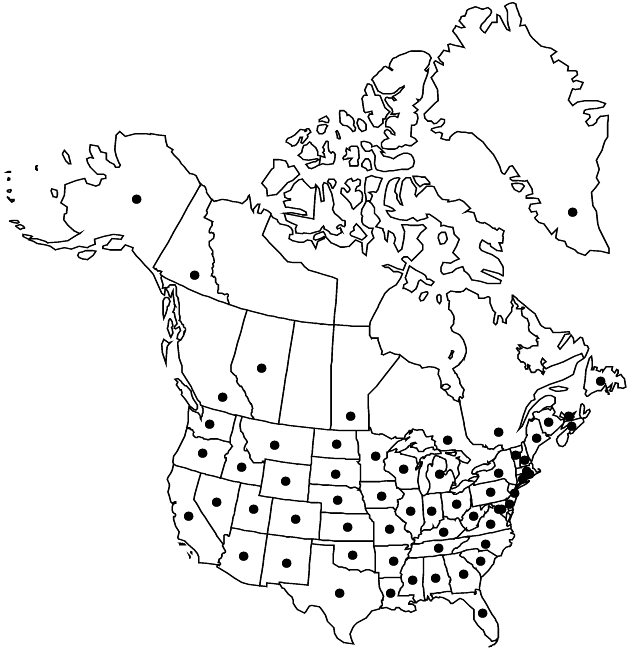Centaurea cyanus
Sp. Pl. 2: 911. 1753.
Annuals, 20–100 cm. Stems usually 1, erect, ± openly branched distally, loosely tomentose. Leaves ± loosely gray-tomentose; basal leaf blades linear-lanceolate, 3–10 cm, margins entire or with remote linear lobes, apices acute; cauline linear, usually not much smaller except among heads, usually entire. Heads radiant, in open, rounded or ± flat-topped cymiform arrays, pedunculate. Involucres campanulate, 12–16 mm. Phyllaries: bodies green, ovate (outer) to oblong (inner), tomentose or becoming glabrous, margins and erect appendages white to dark brown or black, scarious, fringed with slender teeth ± 1 mm. Florets 25–35; corollas blue (white to purple), those of sterile florets raylike, enlarged, 20–25 mm, those of fertile florets 10–15 mm. Cypselae stramineous or pale blue, 4–5 mm, finely hairy; pappi of many unequal stiff bristles, 2–4 mm. 2n = 24 (Russia).
Phenology: Flowering spring–summer (May–Sep).
Habitat: Grasslands, woodlands, forests, roadsides, other disturbed sites
Elevation: 50–2400 m
Distribution

Introduced; Greenland, Alta., B.C., Man., N.B., Nfld. and Labr. (Nfld.), N.S., Ont., P.E.I., Que., Yukon, Ala., Alaska, Ariz., Ark., Calif., Colo., Conn., Del., D.C., Fla., Ga., Idaho, Ill., Ind., Iowa, Kans., Ky., La., Maine, Md., Mass., Mich., Minn., Miss., Mo., Mont., Nebr., Nev., N.H., N.J., N.Mex., N.Y., N.C., N.Dak., Ohio, Okla., Oreg., Pa., R.I., S.C., S.Dak., Tenn., Tex., Utah, Vt., Va., Wash., W.Va., Wis., Wyo., s Europe.
Discussion
Centaurea cyanus is a commonly cultivated garden ornamental. Its cypselae are often included in wildflower seed mixes and it naturalizes readily in many areas.
Selected References
None.